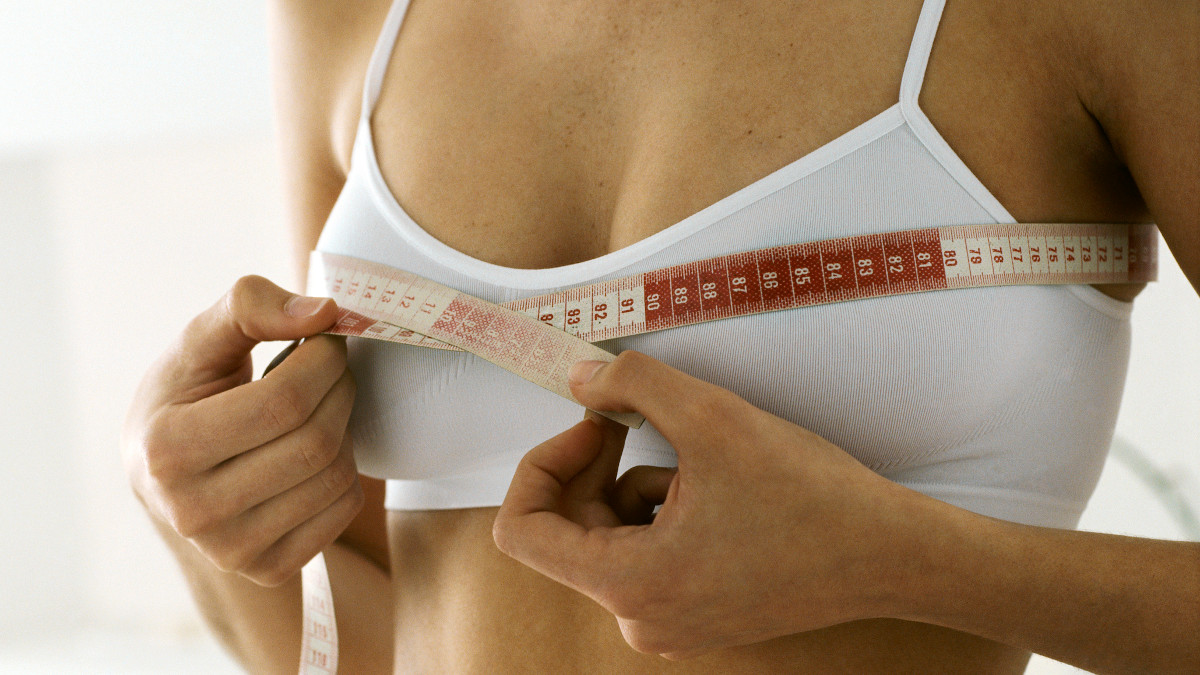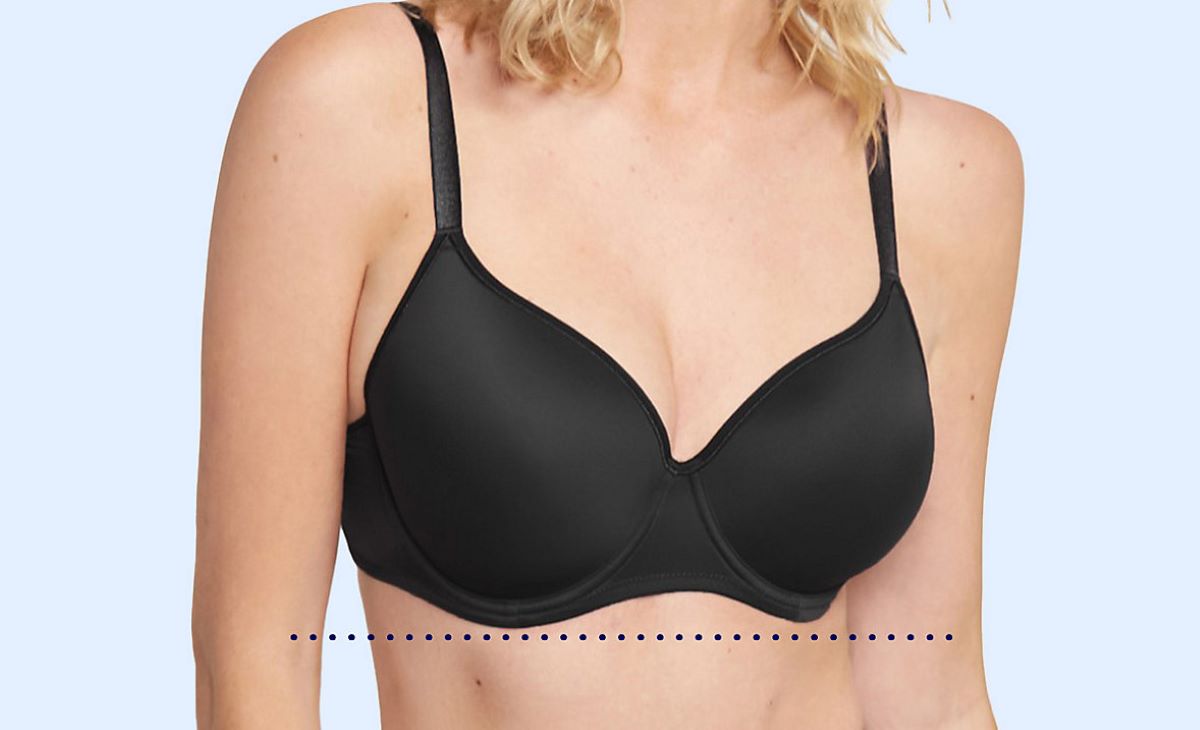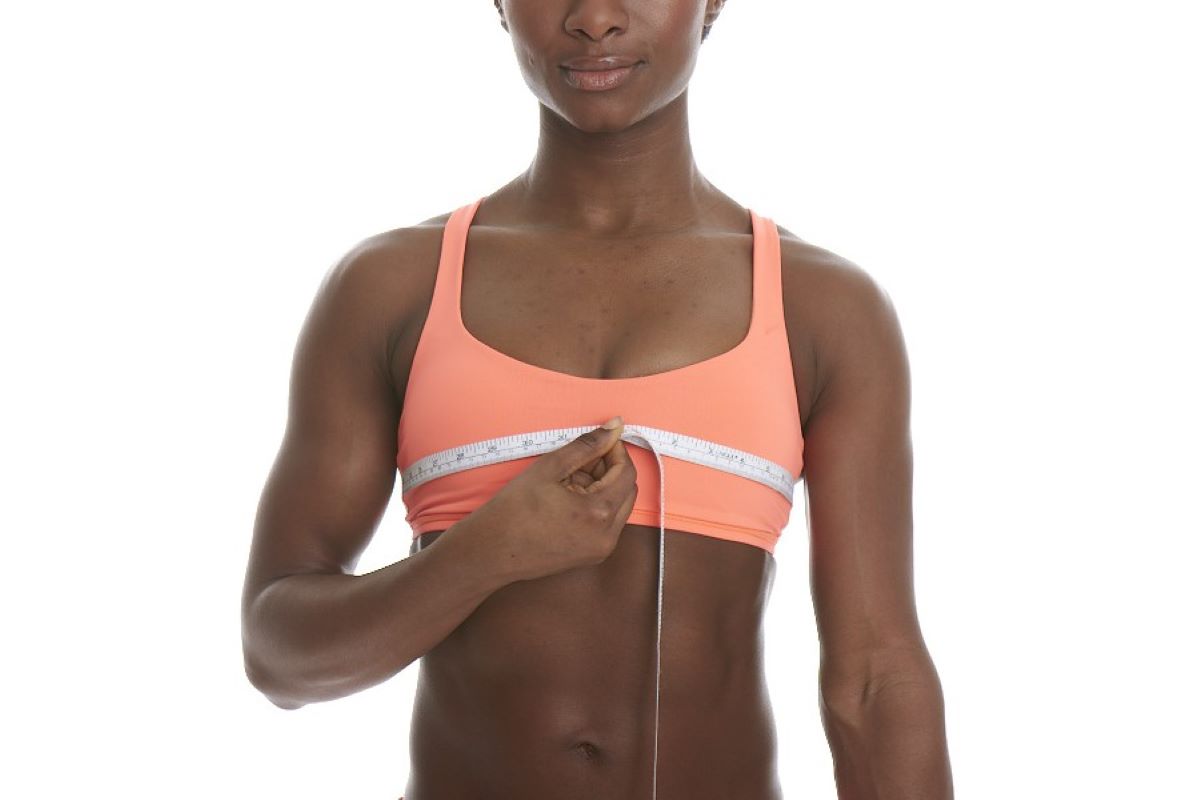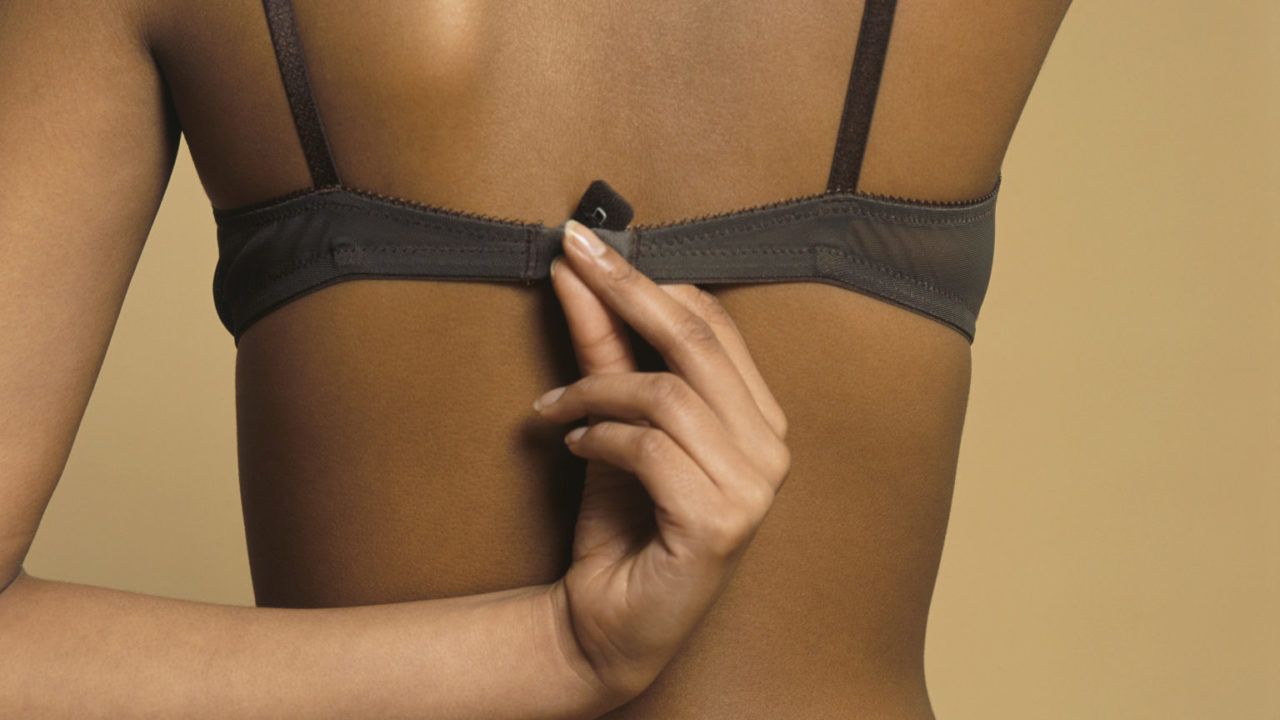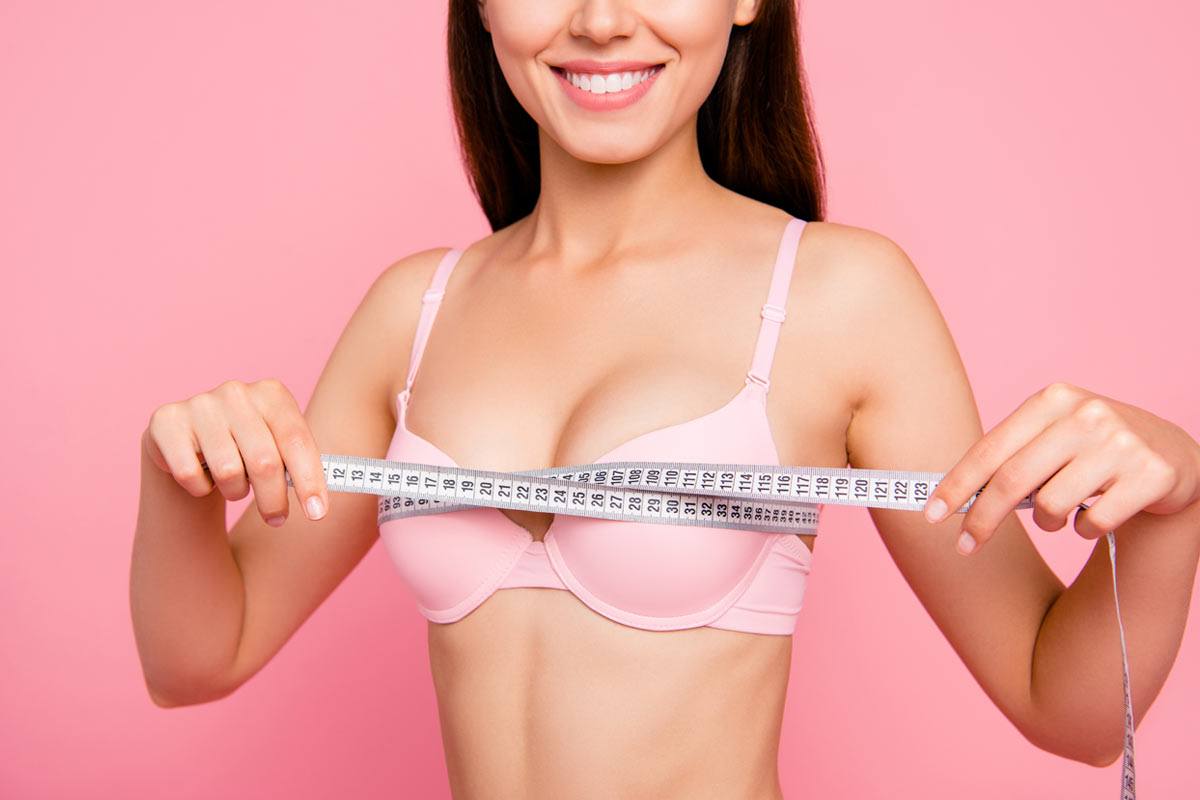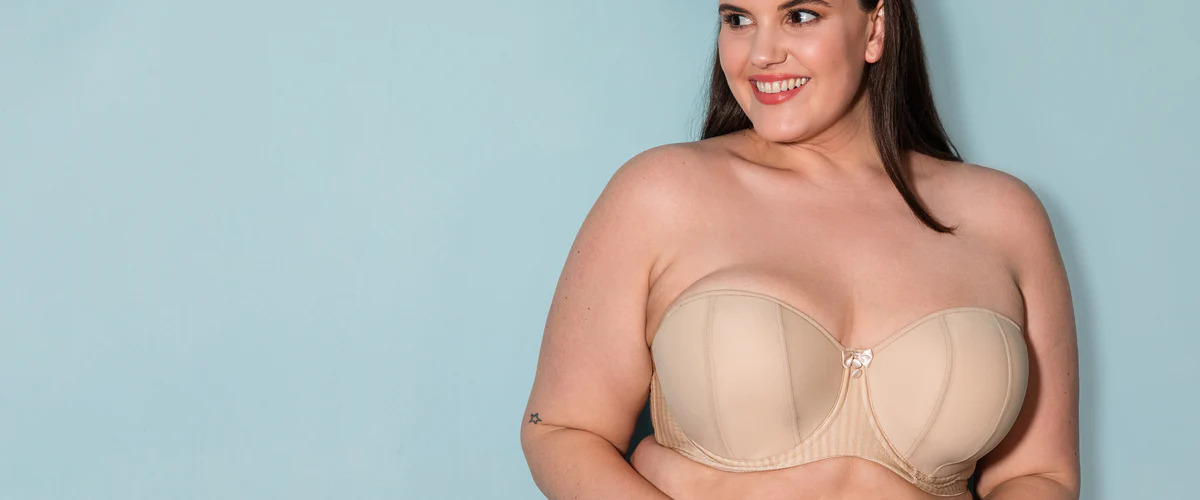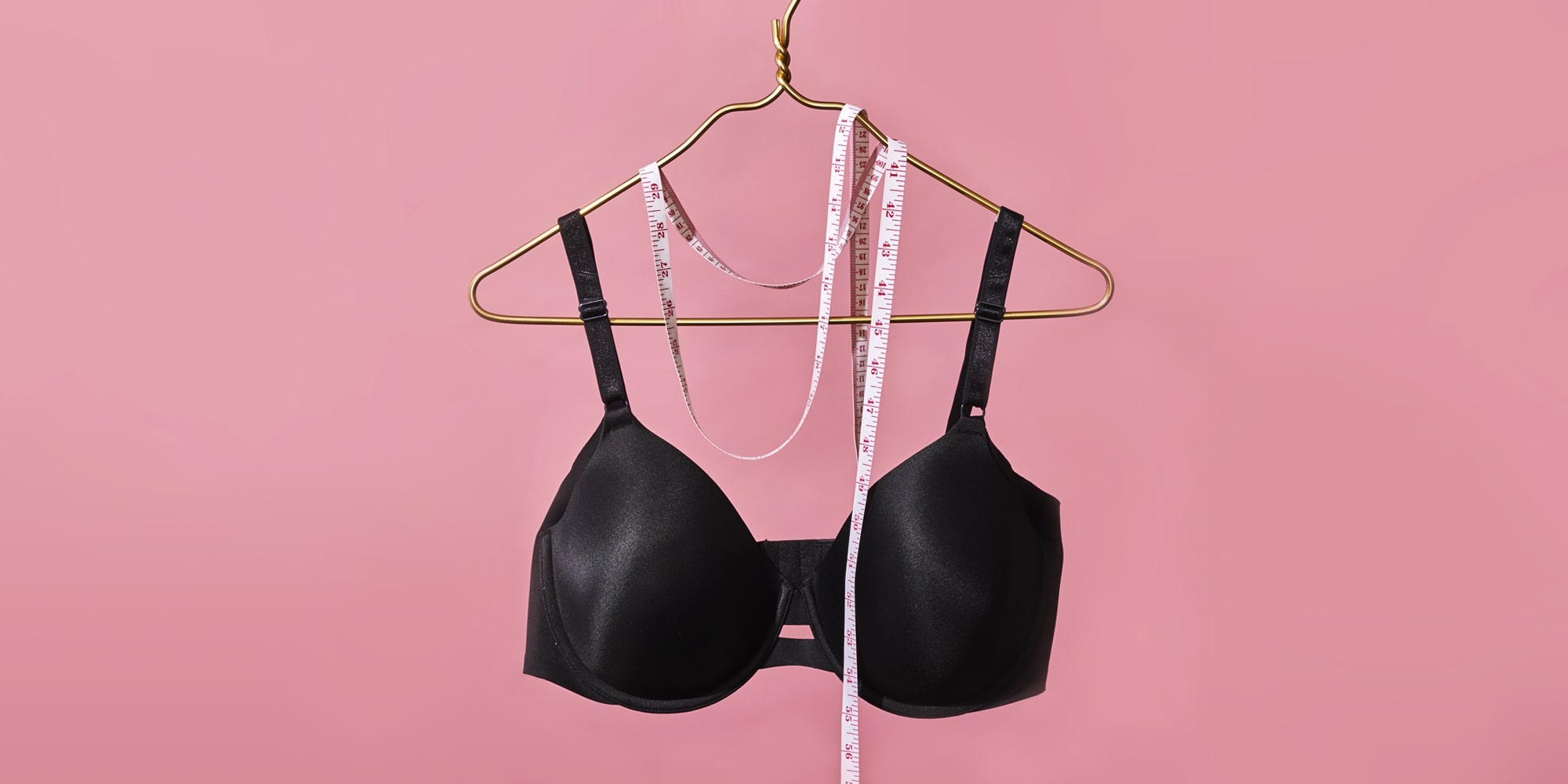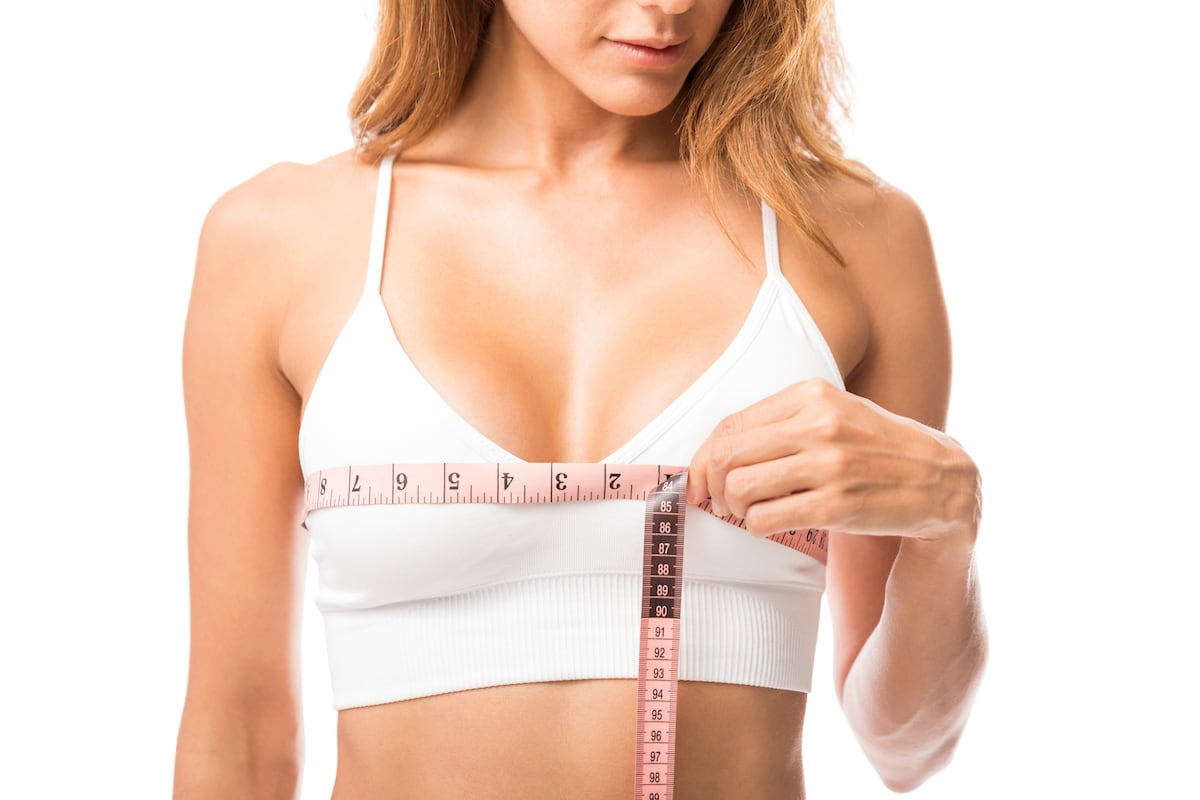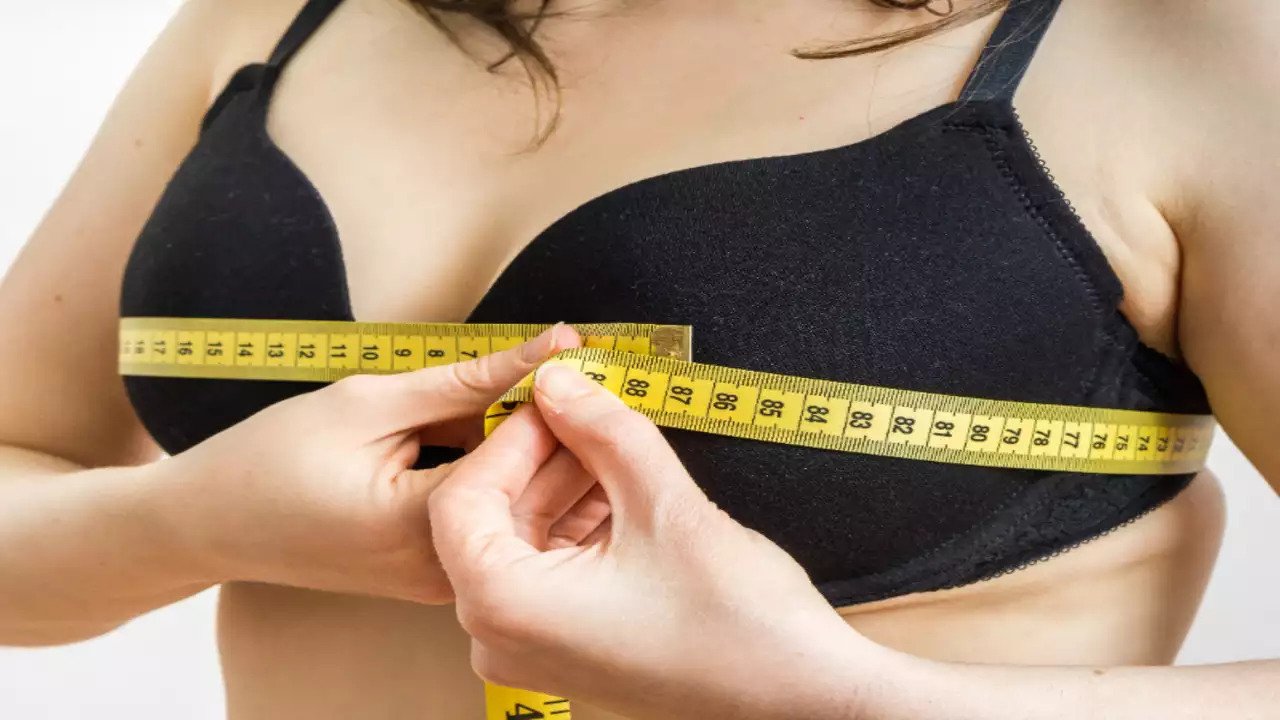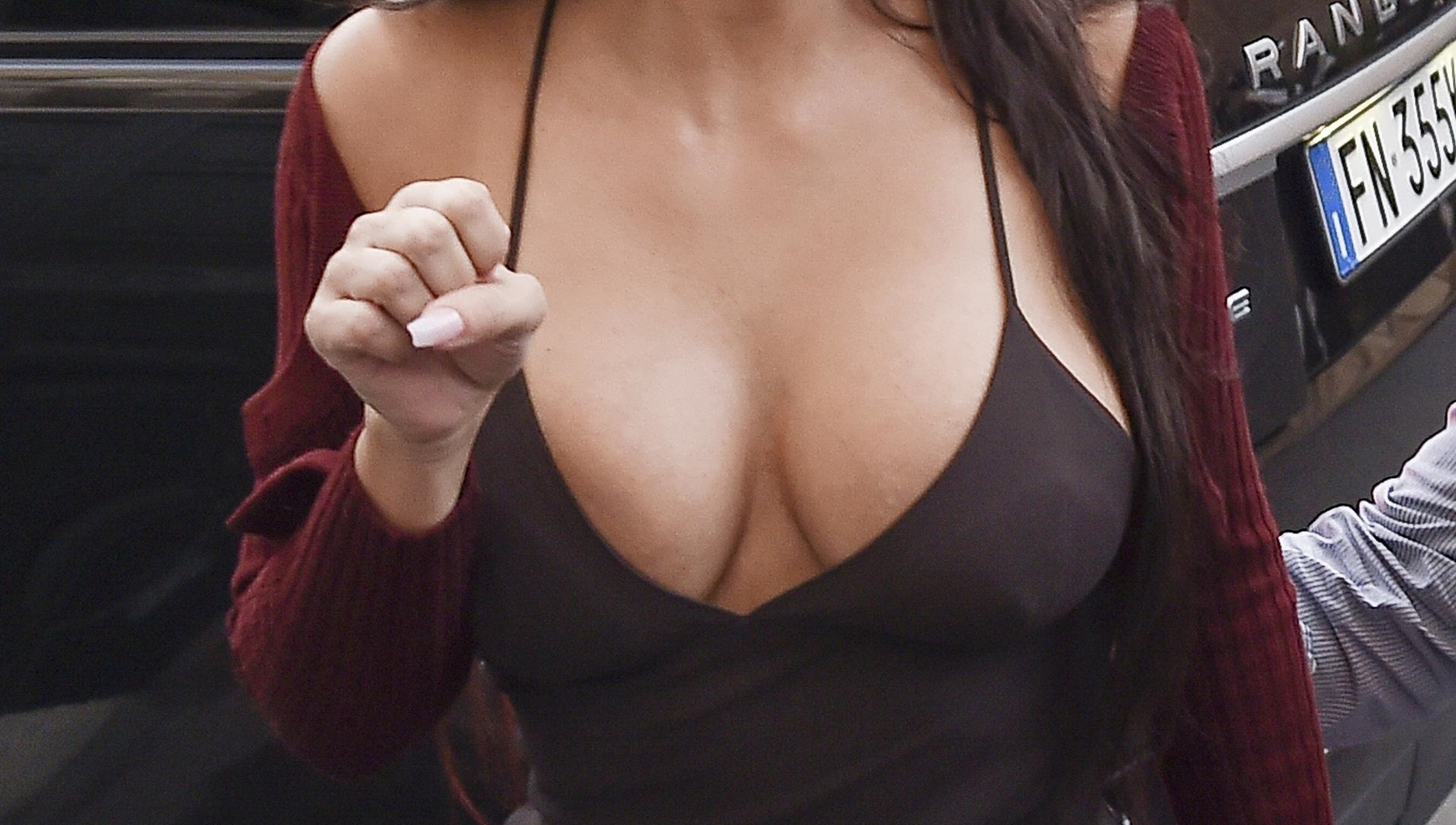Home>How-to Guides>For Women>How To Measure Bra Size?


For Women
How To Measure Bra Size?
Modified: September 23, 2023
Find your perfect fit with our comprehensive bra size chart for women. Learn how to measure your bra size accurately and ensure comfort all day long.
(Many of the links in this article redirect to a specific reviewed product. Your purchase of these products through affiliate links helps to generate commission for Under-tec.com, at no extra cost. Learn more)
Table of Contents
Introduction
Welcome to the world of bra sizes! Finding the perfect bra that offers comfort, support, and enhances your natural shape is like discovering a hidden gem. However, the process of figuring out your correct bra size can be a daunting task for many. With so many variations in styles and sizing systems, it’s easy to feel overwhelmed.
But fear not! In this article, we will guide you through the process of measuring your bra size, understanding the different measurements, and finding the right bra style for your body type.
Understanding your bra size is essential for your overall comfort and well-being. Wearing the wrong size can lead to discomfort, back pain, and even posture problems. On the other hand, wearing the correct size can provide the necessary support, boost your confidence, and make you feel fabulous.
Before we dive into the technicalities, it’s important to note that every woman’s body is unique and beautiful. Variations in breast shape, fullness, and size are completely natural. Embrace your individuality and focus on finding the bra that works best for you.
So, are you ready to discover your perfectly fitting bra? Let’s get started!
Understanding Bra Size
One of the first steps in finding the right bra is understanding how bra sizes are determined. A bra size consists of two key measurements: the band size and the cup size.
The band size refers to the measurement around your ribcage, just below your breasts. It provides the primary support for your bra. The cup size, on the other hand, relates to the volume of your breasts and is indicated by letters such as A, B, C, and so on.
It’s important to remember that bra sizes are not universal. Different brands and countries may use slightly different sizing systems, which can add to the confusion. To ensure accurate measurements and a perfect fit, it’s best to measure yourself using a tape measure and refer to a sizing chart specific to the brand you plan to purchase.
It’s also worth noting that bra sizes are not static and can vary over time due to factors such as weight gain or loss, hormonal changes, or pregnancy. Therefore, it’s a good idea to re-evaluate your bra size regularly to ensure optimal comfort and support.
Additionally, it’s crucial to understand that the cup size is not an absolute indicator of breast size. A 32C may have a different cup volume than a 36C, as the band size affects the overall fit. This is known as sister sizing. So, if you find that your band size is too tight or loose while the cup size feels comfortable, you can try adjusting to a sister size to achieve a better fit.
Knowing these basics will help you navigate the world of bra sizes with more confidence. Now, let’s move on to the next steps in measuring your bra size.
Band Size Measurement
The band size is an essential component of finding the right bra fit. It provides the majority of the support and should feel snug but not uncomfortably tight. To measure your band size accurately, follow these steps:
- Start by wearing a non-padded bra or no bra at all. This ensures that your measurements are not skewed by additional padding.
- Wrap a soft tape measure around your ribcage, just below your breasts. Ensure that the tape measure is parallel to the ground and not too tight or too loose. Take note of this measurement in inches or centimeters.
- If your measurement is an even number, this is your band size. For example, if your measurement is 32 inches, your band size is 32. If your measurement is an odd number, add 1 inch to get your band size. For example, if your measurement is 33 inches, your band size is 34.
Keep in mind that the band size should feel snug but comfortable. It should not dig into your skin or leave red marks. If you find that your band size is too tight or too loose, you may need to try a different size or adjust the hooks on your bra for a better fit.
Remember, the band provides the majority of the support, so it’s crucial to get this measurement right. Now that you have your band size, let’s move on to measuring the cup size.
Cup Size Measurement
Now that you have determined your band size, it’s time to measure your cup size. The cup size refers to the volume of your breasts and is denoted by letters such as A, B, C, and so on. Follow these steps to measure your cup size accurately:
- Stand straight with your arms relaxed at your sides.
- Wrap the tape measure around the fullest part of your breasts, ensuring that it is parallel to the ground. Make sure not to flatten or squeeze your breasts while measuring.
- Note down this measurement in inches or centimeters.
- To calculate your cup size, subtract your band size measurement from your bust measurement. The difference between the two determines your cup size.
Use the following guide to determine your cup size based on the difference:
- If the difference is 0-0.5 inch (0-1.3 cm), your cup size is AA.
- If the difference is 0.5-1 inch (1.3-2.5 cm), your cup size is A.
- If the difference is 1-2 inches (2.5-5 cm), your cup size is B.
- If the difference is 2-3 inches (5-7.6 cm), your cup size is C.
- If the difference is 3-4 inches (7.6-10 cm), your cup size is D.
- If the difference is 4-5 inches (10-12.7 cm), your cup size is DD (or E in some sizing systems).
Remember, this is just a general guide, and cup sizes may vary slightly across different brands and countries. It’s always a good idea to try on different cup sizes to find the most comfortable and best-fitting option for you.
Now that you have your band size and cup size, you are one step closer to finding your perfect bra fit. Let’s move on to calculating your overall bra size.
Calculating Bra Size
Now that you have measured your band size and cup size, it’s time to combine those measurements to calculate your overall bra size. Here are the steps to determine your bra size:
- Start with your band size measurement, which is the number we obtained earlier. For example, let’s say your band size is 34.
- Next, refer to your cup size measurement and the corresponding letter. For example, if your cup size measurement indicates a difference of 2 inches, your cup size is B.
- Combine the band size and cup size to get your bra size. In this example, your bra size would be 34B.
Remember, bra sizes can vary slightly across different brands and styles. So, it’s a good idea to try on a few different sizes to find the best fit for your unique shape and preferences.
Additionally, it’s important to understand that finding the perfect bra size is not solely based on measurements. Factors such as breast shape, fullness, and individual comfort preferences come into play as well. Don’t be discouraged if your measurements suggest one size but another size feels more comfortable and supportive. Trust your instincts and choose the size that feels right for you.
Once you have calculated your bra size, it’s time to explore different bra styles and consider your unique body type for the best fit and support. Let’s delve into these factors next.
Considerations for Different Body Types
When it comes to choosing the right bra, considering your body type is key to finding a comfortable and supportive fit. Different body types have varying breast shapes, fullness, and proportions, which can affect the way a bra fits and feels. Here are some considerations to keep in mind:
- Hourglass Shape: If you have an hourglass figure with a well-defined waist, a bra with moderate coverage and support can enhance your natural curves. Balconette or demi-cup bras are great options, as they provide lift and create a flattering neckline.
- Apple Shape: For those with an apple-shaped body, where the upper body is broader than the hips, choosing a bra with wider straps and strong side support can help provide added lift and keep everything in place. Full-coverage bras or bras with a more structured shape are ideal.
- Pear Shape: If you have a pear-shaped body, where the hips are wider than the shoulders, bras with a wider band and fuller cups can help balance out your proportions. Look for bras with side slings or wide-set straps for extra support and lift.
- Athletic Build: For those with an athletic build and smaller bust, opting for bras with push-up or padded cups can add volume and create more defined curves. Plunge or T-shirt bras are also great choices as they provide a seamless look and subtle lift.
Remember, these are just general guidelines, and what matters most is finding a bra that makes you feel confident, comfortable, and supported. Don’t be afraid to experiment with different styles and sizes until you find the perfect fit for your unique body type.
Now that you have considered your body type, let’s explore the different bra styles available and how they can further enhance your fit and support.
Finding the Right Bra Style
With so many different bra styles available, finding the right one for your needs and preferences can make a significant difference in comfort, support, and style. Here are some popular bra styles to consider:
- T-Shirt Bra: T-shirt bras are designed with smooth, seamless cups that provide a seamless look under tight or thin fabrics. They are lightly padded for shape and often offer a bit of lift as well. T-shirt bras are a versatile option for everyday wear.
- Balconette Bra: Balconette bras lift the breasts from the bottom while creating a rounded, uplifted shape. They often have wide-set straps and a lower-cut neckline, making them perfect for scoop or square-necked tops.
- Push-Up Bra: Push-up bras are designed to enhance the appearance of the cleavage by lifting the breasts and creating a fuller look. They typically have padded cups and may also feature underwire for added support.
- Sports Bra: Sports bras provide maximum support during physical activity. They are designed with compression or encapsulation technology to minimize breast movement and reduce discomfort. Look for sports bras with adjustable straps and a snug, supportive fit.
- Bralette: Bralettes are wire-free and offer a more relaxed and comfortable fit. They are typically made of stretchy materials and provide minimal shaping and support. Bralettes are a popular choice for those looking for comfort and a laid-back, fashionable style.
When trying on different bra styles, pay attention to how they fit, support, and enhance your breasts. Adjust the straps and hooks to ensure a secure and comfortable fit. Remember, finding the right bra style is a personal preference, so choose one that aligns with your unique style and comfort needs.
Now that you have an understanding of different bra styles, let’s address some common bra size problems and their solutions.
Common Bra Size Problems and Solutions
Even with accurate measurements and careful selection, it’s not uncommon to encounter bra size problems. Here are some common issues and their solutions:
- Band Riding Up: If the band rides up your back, it may be too big. Try a smaller band size, making sure it feels snug but not overly tight. Consider adjusting the hooks to the tightest setting for additional support.
- Straps Digging into Shoulders: If the bra straps are digging into your shoulders, it indicates that your band is not providing enough support. Try a smaller band size and adjust the straps to ensure a comfortable fit.
- Cup Spillage: If your breasts are spilling over the cups, it’s a sign that the cups are too small. Try a larger cup size to ensure proper coverage and containment of your breasts.
- Gaping Cups: Gaping cups occur when the cups are too big for your breasts. Try a smaller cup size or opt for a style with a more structured cup for better support and shape.
- Underwire Digging In: If the underwire of your bra is digging into your skin, it may be due to the cups being too small or the wrong shape for your breasts. Consider trying a larger cup size or a different style without underwire for a more comfortable fit.
- Uneven Breasts: Many women have one breast slightly larger than the other. In such cases, fit the bra to the larger breast and consider padded or removable inserts for the smaller side to create symmetry and balance.
Remember that bra size problems can be individual and may require some trial and error to find the perfect fit. It’s essential to be patient, try different sizes, and styles until you find what works best for you. Don’t hesitate to seek assistance from a professional fitter if you’re unsure about your size or need expert guidance in finding the right bra.
Now that you are armed with knowledge about the common problems and their solutions, you are ready to find your ideal bra fit. Take the time to understand your body, measure accurately, and experiment with different styles until you discover the perfect blend of comfort, support, and confidence.
Conclusion
Finding the right bra size is a crucial step in achieving comfort, support, and confidence. Understanding how to measure your band size, cup size, and calculating your overall bra size is key to finding the perfect fit. Remember to consider your body type and explore different bra styles to enhance your shape and meet your unique needs.
Although the process may seem overwhelming, don’t be discouraged. Embrace the beauty of your individuality and trust your instincts when it comes to selecting the right bra for you. Keep in mind that bra sizes can vary across brands and styles, so it’s always a good idea to try on different sizes and styles to find the most comfortable and supportive option.
Pay attention to common bra size problems, such as band riding up, straps digging into shoulders, cup spillage, and adjust accordingly to ensure a proper fit. Don’t hesitate to seek assistance from a professional fitter if needed or if you have any doubts about your size.
Finally, remember that the goal is not just to find a bra that fits but to discover a bra that makes you feel fabulous and confident. Embrace your body, celebrate your uniqueness, and explore the world of lingerie with excitement and self-assurance.
Now that you have the knowledge and tools to find your perfect bra size, go forth and embrace the comfort and support that come with a well-fitting bra. Enjoy the journey of discovering the styles and designs that make you feel like the beautiful and empowered woman you are.
